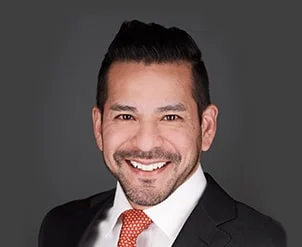Can I File Bankruptcy on Student Loans?

A staggering 45 million borrowers owe a collective $1.56 trillion in student debt. That amount is higher than vehicle loans and credit card debt. The average student loan debtor owes about $30,000. Many owe much more, and millions owe more than $100,000.
As outlined below, bankruptcy offers a way out. Under certain circumstances, Chapter 7 eliminates these unsecured debts. Other debtors can take advantage of Chapter 13’s extended protected repayment period to catch up on delinquent payments. Additionally, bankruptcy mediation, which is a powerful pro-debtor tool, might be available to all bankruptcy debtors.
A Chicago bankruptcy lawyer is often the key to success in all three areas. An attorney advocates for you in court and helps you budget for an affordable monthly debt consolidation payment. Additionally, an attorney is a good negotiator who is not intimidated by big student loan companies.
Discharge in a Chapter 7
Student loans are priority unsecured debts. Therefore, they are difficult, but certainly not impossible, to discharge in a Chapter 7.
There is an old saying among attorneys that bad cases make bad law. That was certainly the case in In Re Brunner. In 1982, Marie Brunner graduated with her master’s degree and about $9,000 in student loans. Even in the early 80s, nine grand was not an eye-popping amount of debt. Nevertheless, she made no effort to pay it. Instead, she immediately asked for a discharge.
Not surprisingly, the court rejected her request, finding that she had not proven an undue hardship. According to this decision, student loan borrowers have an undue hardship if:
- Repaying the loan would drive them below the poverty line,
- They had made a good-faith effort to repay their loans, and
- They had hardships which were either permanent or would last for most of the repayment period.
That’s a difficult standard to meet. However, there is another saying among attorneys that you don’t get anything unless you ask. Even if they do not have clear-cut undue hardships, most student loan debtors who request relief receive at least a partial discharge.
Elimination in a Chapter 13
Thirty grand is enough to prompt most people to delay major purchases, like homes. However, if the payments are current, student loans can be a financially good thing. On-time payments drive up your credit score.
However, if debtors fall a few months behind, their credit scores drop precipitously. Even worse, banks often garnish wages and take other adverse action against the borrowers.
Chapter 13’s protected repayment period reverses this downward spiral. These debtors have up to five years to erase debt delinquency. While they make income-based catch-up payments, creditors cannot take any adverse action against them.
Renegotiation in Both Chapters
Typically, there is usually some dispute about the amount due. Banks often buy and sell student loans, and the paperwork does not always keep up with these transactions. In these and similar situations, most judges refer the matter to mediation.
During bankruptcy mediation, creditors have a legal duty to negotiate in good faith. They must be willing to make sacrifices to reach an agreement. In other words, the bank cannot deny refinancing or other relief simply because the debtor does not technically qualify for some obscure reason. This option is only available in bankruptcy.
Rely on Experienced Lawyers
Bankruptcy helps student loan debtors in several ways. For a free consultation with an experienced Chicago bankruptcy lawyer, contact the Bentz Holguin Law Firm, LLC. We routinely handle matters in Indiana and Illinois.
Resource:
forbes.com/sites/zackfriedman/2020/02/03/student-loan-debt-statistics/#724d1028281f
https://bentzholguinlaw.com/whats-the-difference-between-chapter-7-and-chapter-13-in-indiana/


